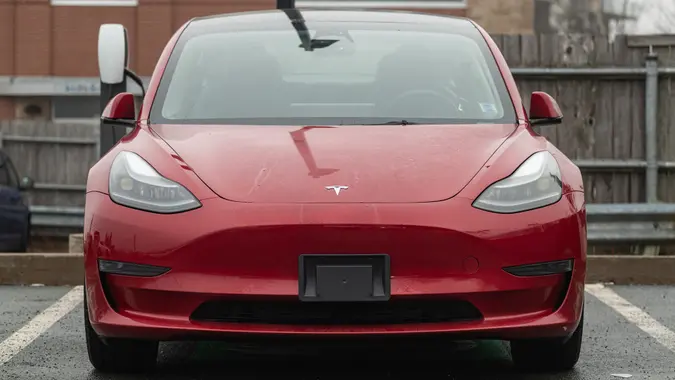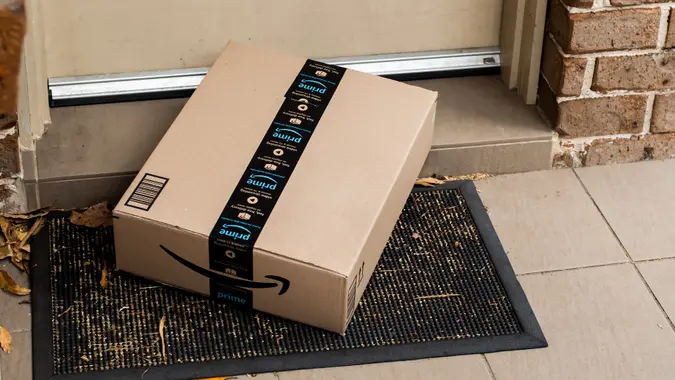5 Smart Home Devices To Invest In To Save on Utility Bills This Winter

Commitment to Our Readers
GOBankingRates' editorial team is committed to bringing you unbiased reviews and information. We use data-driven methodologies to evaluate financial products and services - our reviews and ratings are not influenced by advertisers. You can read more about our editorial guidelines and our products and services review methodology.

20 Years
Helping You Live Richer

Reviewed
by Experts

Trusted by
Millions of Readers
The simplest way to lower your winter utility bill is to turn the thermostat way down and wear several layers of clothing around the house, but not everyone wants to do that. A good alternative is to install smart home devices that maximize efficiency and lower utility bills.
You don’t have to break the bank to invest in smart home devices. In some cases, you can stock up on various devices for a couple hundred dollars, though you can easily spend much more than that for higher-end options.
If you want to save on utility bills this winter, here are five smart home devices to consider buying.
Smart Thermostats
Your thermostat can be your best friend or worst enemy when it comes to winter heating bills — especially if you live where subfreezing temperatures are the norm. Smart thermostats fall into the “friend” category because they’re designed to adjust your home’s temperature for the most efficient performance.
Energy Star describes a smart thermostat as a “Wi-Fi-enabled device that automatically adjusts heating and cooling temperature settings in your home.” Many models learn your temperature preferences and then set a schedule that automatically adjusts to energy-saving temperatures when you’re sleeping or away from home.
Featured prices for smart thermostats on Amazon typically range from around $35 to $180, though some cost more than that.
Smart Leak Sensor
If you want to lower your water bills during the winter, installing a smart leak sensor is a good first step. These are internet-connected devices placed next to plumbing to monitor pipes for drips and freezes, according to a blog on the Tom’s Guide website. Smart leak sensors can be integrated into your smart home platform to send notifications to your phone, make announcements on your smart speakers, or flash interior lights to let you know if a drip is occurring.
Featured prices on Amazon typically range from about $20 to $80.
Smart Lights
It gets dark early and often during winter, and smart lights are a good way to ensure your power bill doesn’t hold unpleasant surprises. As Best Buy noted on its website, smart lights are lighting fixtures and light bulbs that can “sense and interact automatically with their environments and with users and other smart devices.” They can be controlled remotely or through voice commands via wireless connectivity. Smart lights also can be programmed to automatically turn off when they’re no longer needed, which helps lower electric bills.
Featured prices on Amazon for smart ceiling light fixtures typically range from about $30 to $100, though some items cost much more.
Smart Plugs
Smart plugs let you remotely connect and control appliances such as space heaters and fans, according to Tom’s Guide. For example, you can schedule a space heater to warm up specific rooms only when they are needed, which means you don’t waste energy. If your smart plug supports energy monitoring, you also can adjust use patterns to maximize efficiency.
Featured prices on Amazon typically range from around $15 to $30.
Smart Energy Monitors
These monitors serve as a “personal energy consultant” by helping you identify where you can reduce energy use and save money, according to a blog from Race Communications. The devices provide real-time data on your appliances’ energy use and help you pinpoint energy leaks that drive up power bills during the winter. For example, a smart energy monitor might determine that your heating system works too hard when the house is empty.
Featured prices on Amazon typically range from about $100 to $300.
More From GOBankingRates
- Nearly 1 in 3 Americans Hit by a Costly Holiday Scam, Norton Survey Shows -- How To Avoid This
- Here's What the Average Social Security Payment Will Be in Winter 2025
- How Middle-Class Earners Are Quietly Becoming Millionaires -- and How You Can, Too
- The Easiest Way to Score $250 for Things You Already Do
 Written by
Written by  Edited by
Edited by 

























